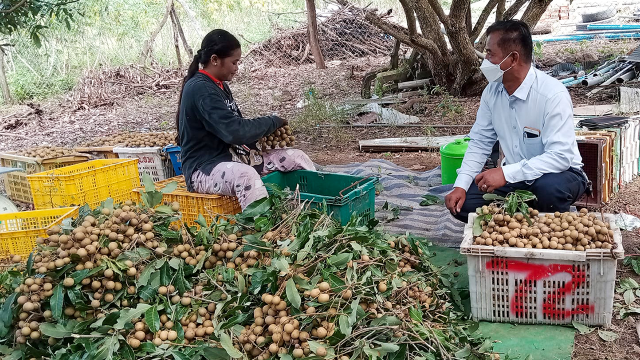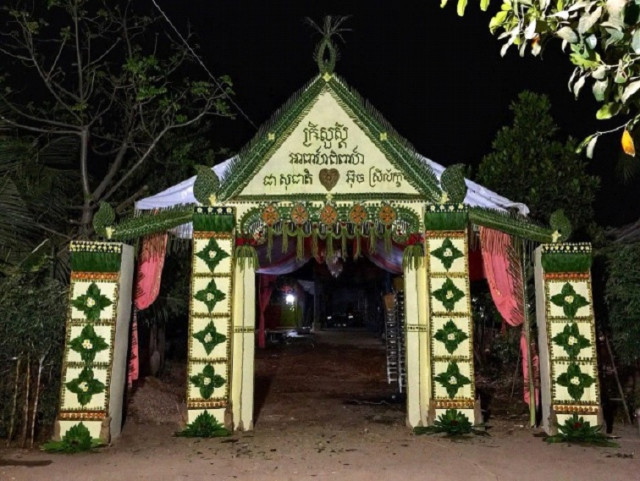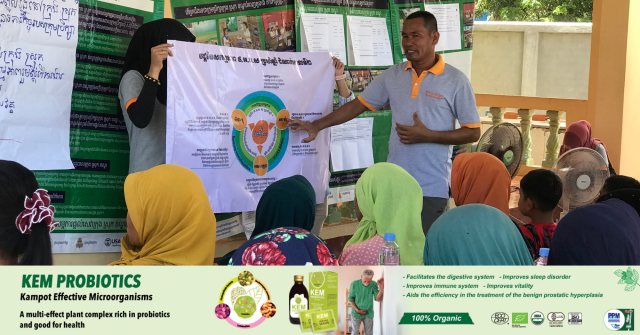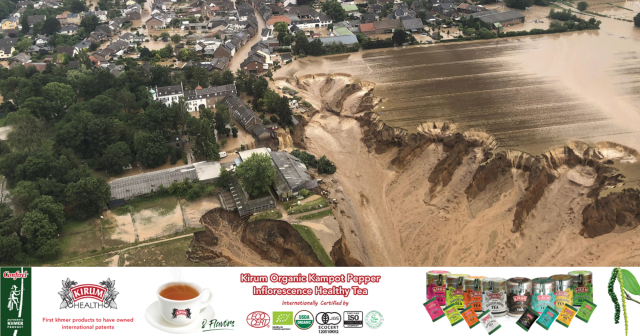Meet the 12 Pagodas Along the Siem Reap Stream
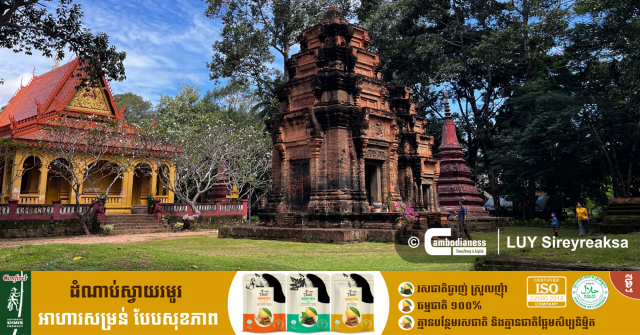
- By Isa Rohany
- October 14, 2023 2:00 PM
SIEM REAP — Scientifically considered an “hydraulic city,” the region of Angkor owes its development to the vast water system that was built to accommodate it. Today, communities, temples and pagodas all rely on a healthy amount of water including the 12 Buddhist monasteries that thrive along the Siem Reap stream.
The pagodas—or wat in Khmer—can be found throughout Cambodia and, along streams, rivers and lakes, often serve as landmarks. Mount Kulen, a mountain filled with history and religious beliefs, is the main source of water that supplies four important streams: the Puok stream to the west, the Siem Reap stream in the center, and the Roluos and the Tuek Lich streams to the east (referred to as streams in Khmer, these waterways may get described as river or stream in English).
As time passes, the Siem Reap stream has become the most visible and important body of water among them with 12 pagodas, some old and some relatively new, along its course.
The following information is a summary of a document of the APSARA National Authority—the Cambodian government agency managing the Angkor Archeological Park—prepared by Sen Set between 2014 and 2015.
Teppothivong Pagoda or Thmey Pagoda

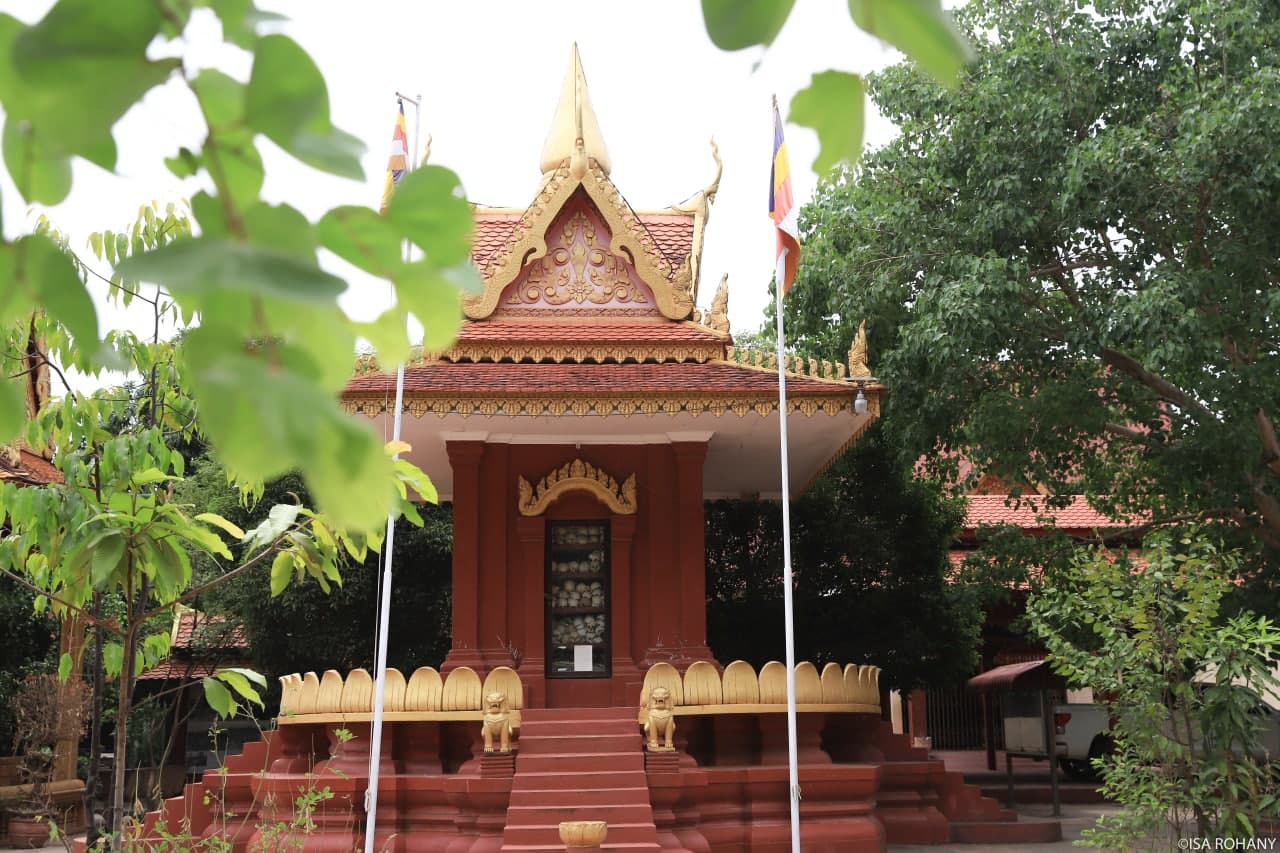
Situated on the northwestern side of Siem Reap city, what surrounds the pagoda was constructed in 1990 while the pagoda’s vihara (where the monks reside) was constructed between 1993 and 1997. Also referred to as the “Skull Pagoda,” the pagoda keeps the skeletal remains of victims of the Khmer Rouge regime. NGO schools as well as kindergartens are located on its grounds.
Preah Enkosei Pagoda

This pagoda got its name from a bas-relief depicting Indra of the Hindu mythology that can be seen on a temple located on the eastern side. Built during the second half of the 10th century, the temple also exhibits a bas-relief of the mythical story of the Churning of the Ocean of Milk. The stupa of Vann Molyvann, the famed Cambodian architect of the 1960s, is located at this pagoda.
Preah Enkosa Pagoda

This pagoda is situated a bit south of Preah Enkosei pagoda and about one kilometre from the Royal Residence in downtown Siem Reap city. The pagoda, whose the name also refers to Indra, was founded in 1503 by Samdach Pem and his religious followers. The current vihara is almost a century old since it was built in 1925 under the supervision of a former head monk.
Polangka pagoda
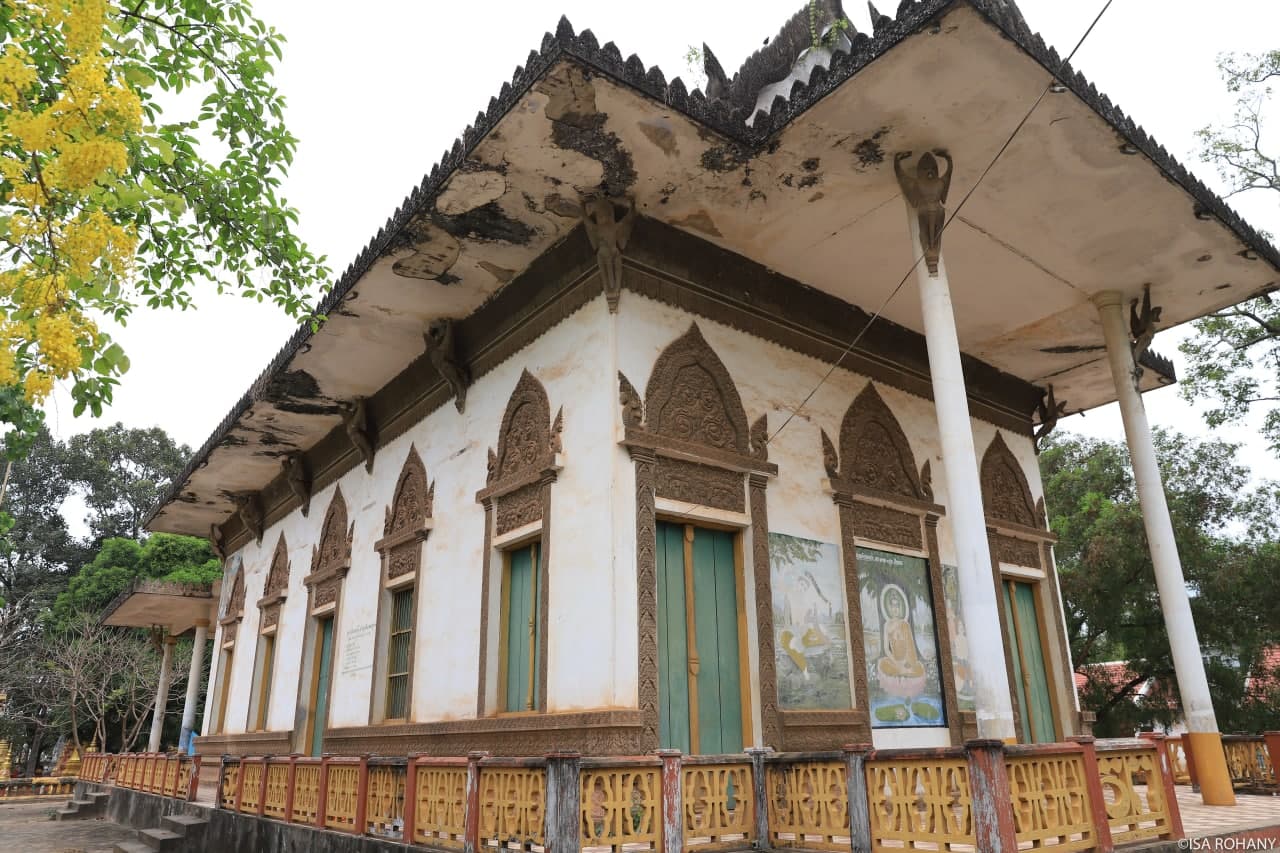
Originally called Po (bodhi) pagoda, the Polangka pagoda was constructed in 1493. The name Langka was then added after a Vietnamese pagoda by that name situated across the stream was demolished. Later on, people combined the two names to call the pagoda.
Reach Bo pagoda or Bo pagoda
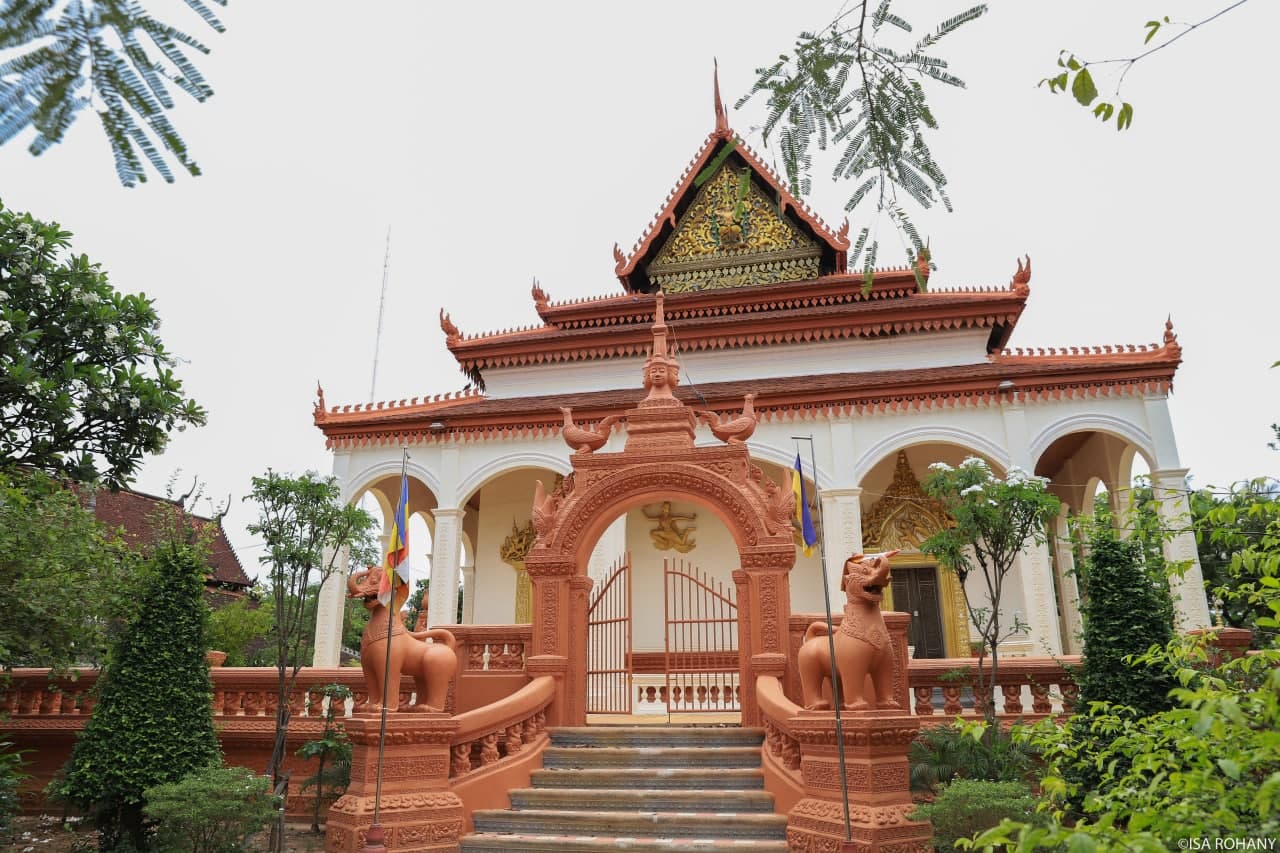
This is one of the most popular pagodas in Siem Reap city and one of the most ancient pagodas in Siem Reap province. Built in 1650, this monastery exhibits elaborate displays of decoration. The pagoda is situated near the Wat Bo road, a stretch of road famous for its combination of Cambodian and foreign style of hospitality and cuisine.
Prom Rath pagoda
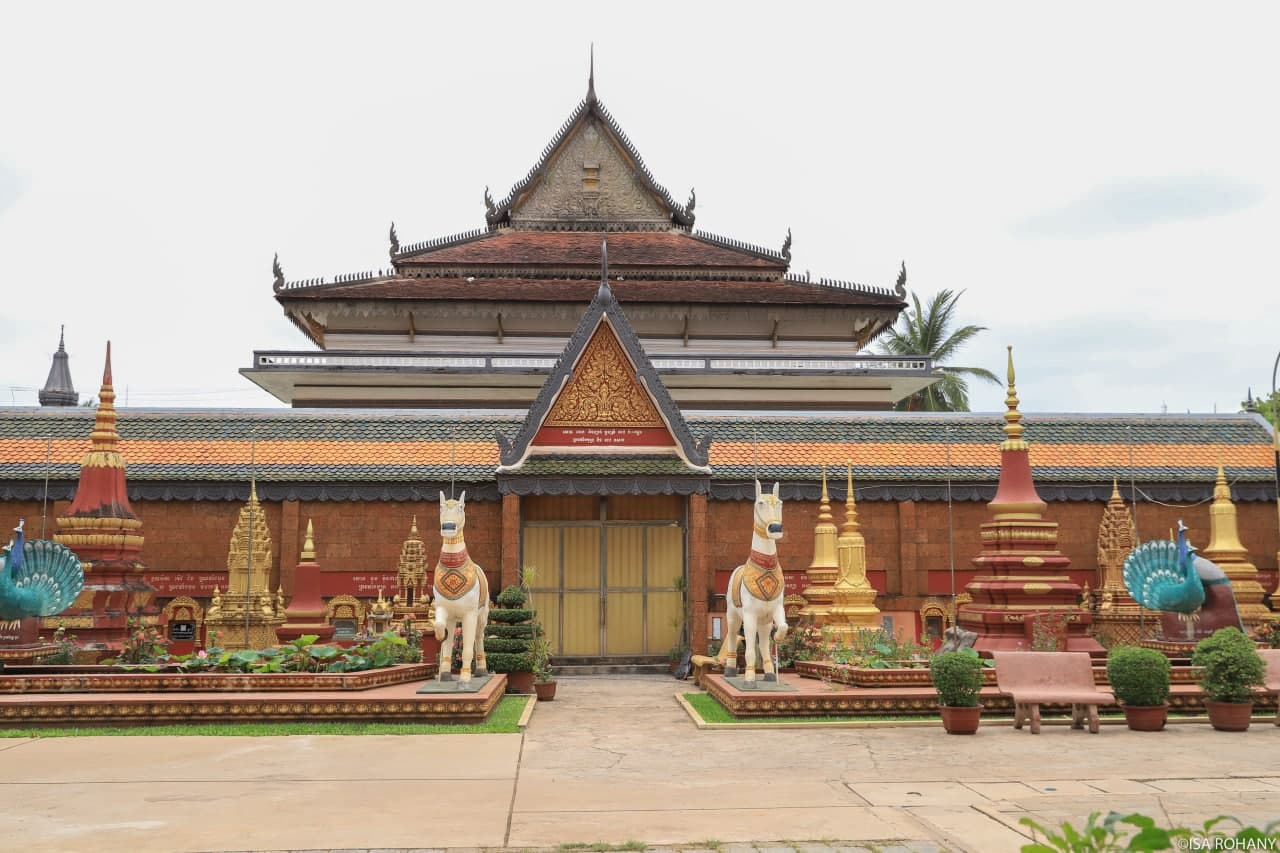
Meaning the jewel of Brahma, the pagoda is situated in downtown Siem Reap city next to Chas market and the famous night-life area of Pub Street. The pagoda is believed to have been built by King Ang Chan at the end of the 18th century on a piece of land offered by the wealthy family of grandfather Prom and grandmother Rath. In 1940, the head monk of the pagoda renamed it the Prom Rath pagoda.
Damnak pagoda

No document has been located regarding its foundation, except something written in the pagoda mentioning the year 1919. However, this might just have been the year of its first restoration. In 1995, the renovated dharamshala was turned into the Center for Khmer Studies, a big library where old documents are stored.
Svay pagoda

Officially called Sovan Phalla Riengsey pagoda, Svay pagoda is the first pagoda situated on the city’s southern route to the Tonle Sap lake. The premises was constructed in 1853 followed by the construction of the vihara in 1925. The pagoda’s head monk had the pagoda renovated in 1960. Damage to the structure was done during the Khmer Rouge regime and by looters afterward.
Kong Moch pagoda
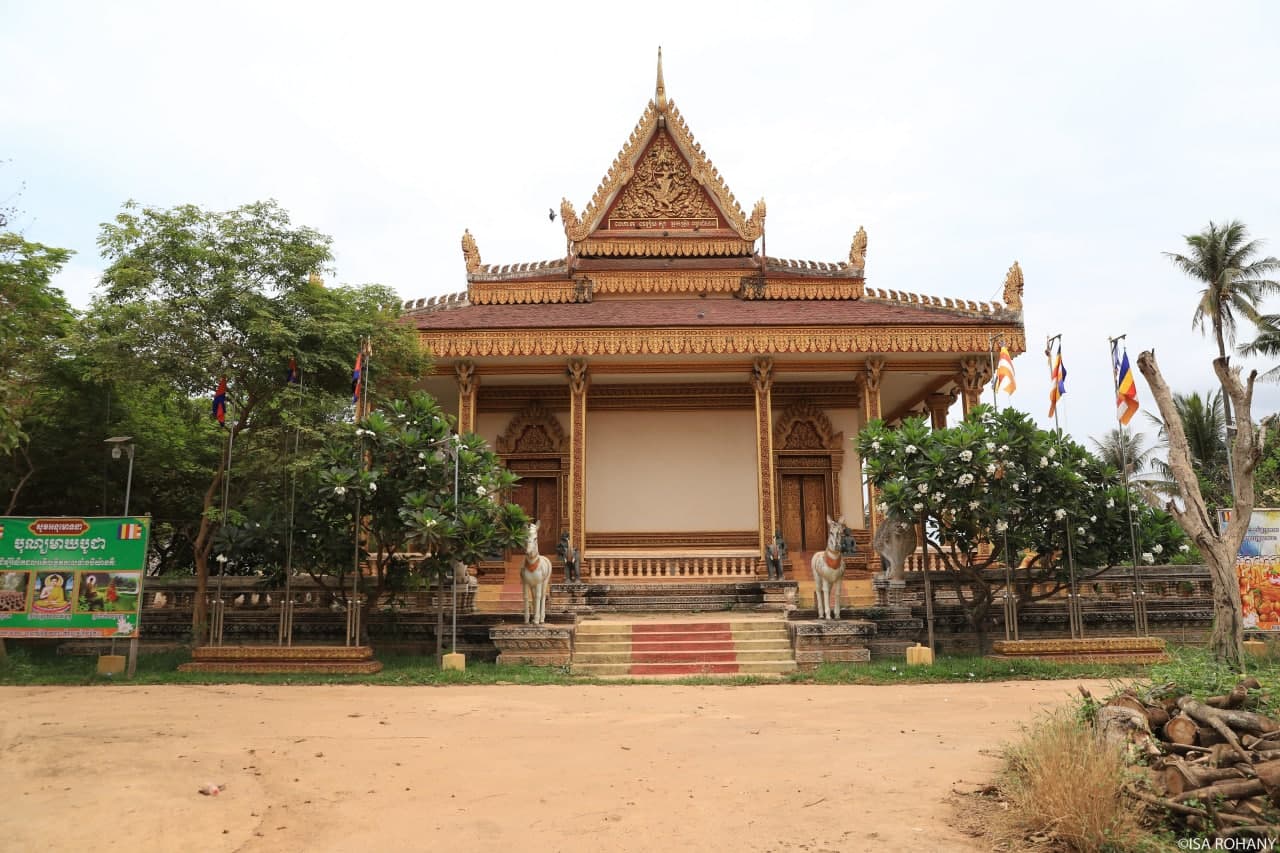
This is the second pagoda situated on the city’s southern route to the Tonle Sap lake. The older vihara, built in 1925, was replaced by a new one in 2005. The staircases were decorated with colourful mythical paintings.
Po Krom pagoda or Po Banteay Chey pagoda
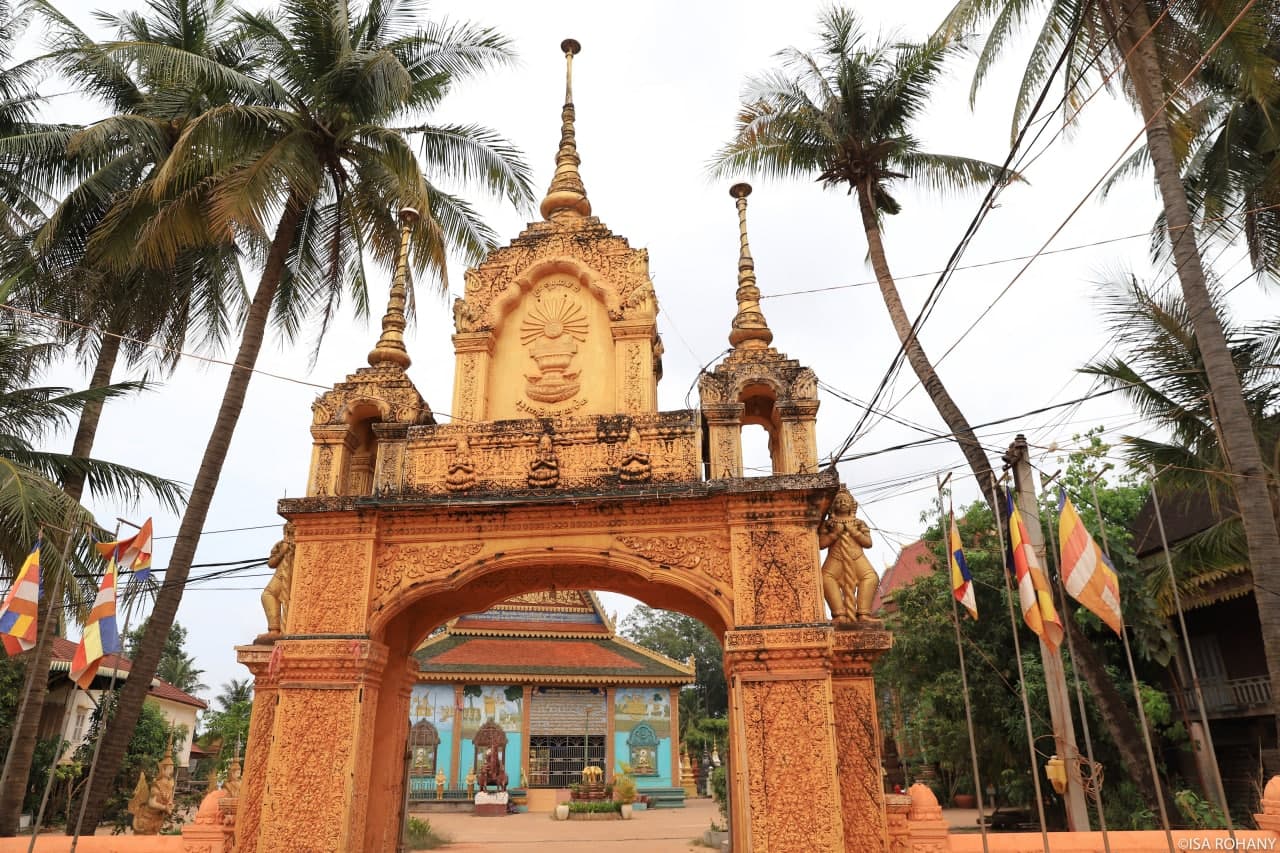
This is the third pagoda situated on the city’s southern route to the Tonle Sap lake. The vihara built between 2005 and 2007 to replace the old one built in 1946 exhibits decorative pillars, rooftops and wall painting, which talk about the mythical Indu tale of the Ramayana.
Aranh Sakor pagoda
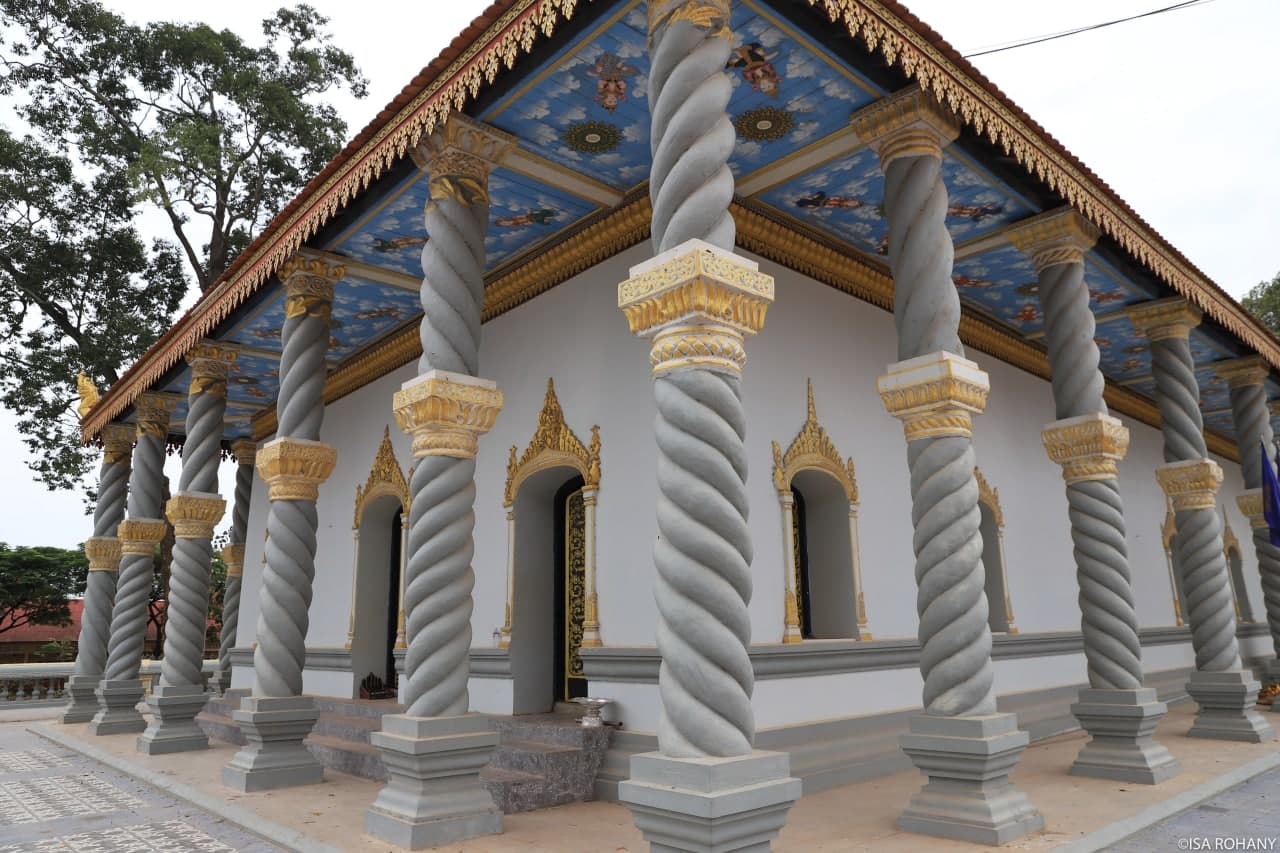
This is the last pagoda situated on the city’s southern route before reaching the Tonle Sap lake. During the rainy season, the lake level does reach the pagoda itself. Constructed on an elevated parcel of land in the mid-19th century, the vihara of the pagoda has large handrails and pillars in the shape of laid rope. Each pillar is composed of two separate sections seamlessly put together.
Athvear pagoda
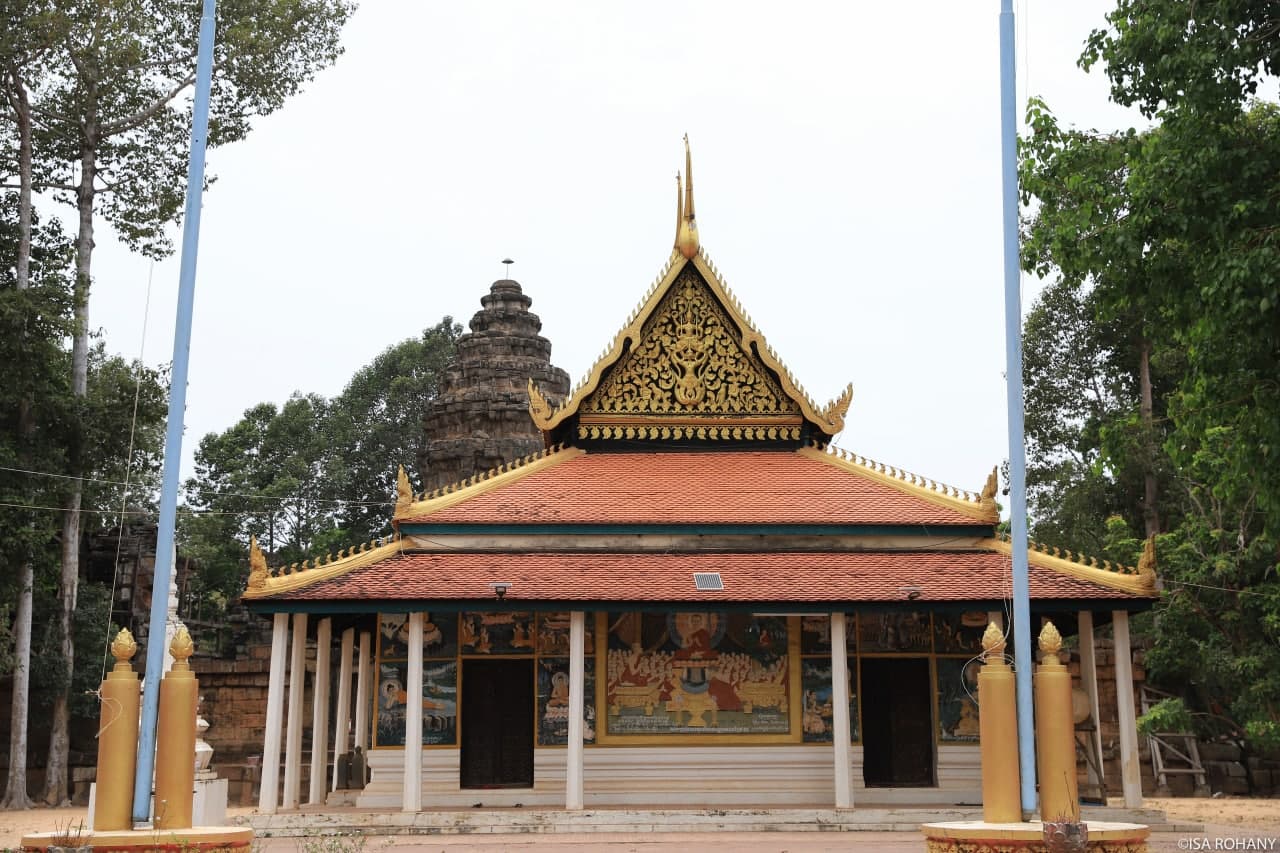
This is the only pagoda situated on the western side of the Siem Reap stream. Next to the pagoda is an Angkorian era temple called the Athvear temple, which was built around the time of the construction of the Angkor Wat temple and has not been restored. The pagoda was completely destroyed during the Khmer Rouge regime of April 1975-Jan. 1979, and was rebuilt in 1980.
Written in Khmer for ThmeyThmey News, the article was translated by Ky Chamna for Cambodianess.
To read the article in Khmer, click here.
Related content:
The Origins and Belief Surrounding the Siem Reap River
Why Did Temples Need Water to Survive?
Opinion: The Role of Buddhist Pagodas in the Building of Cambodia’s Society






